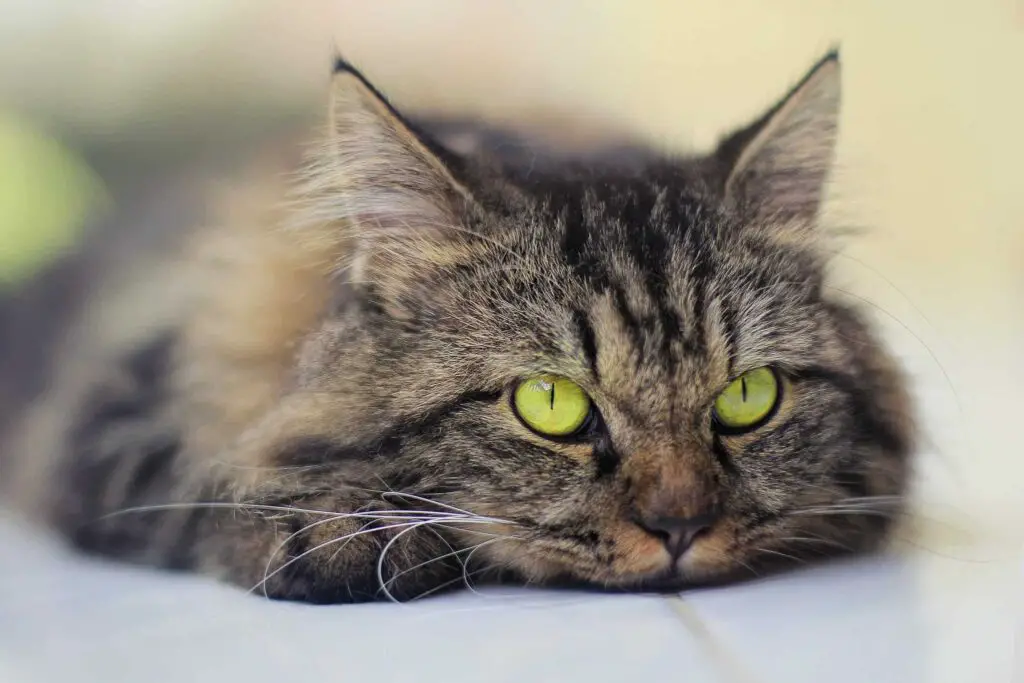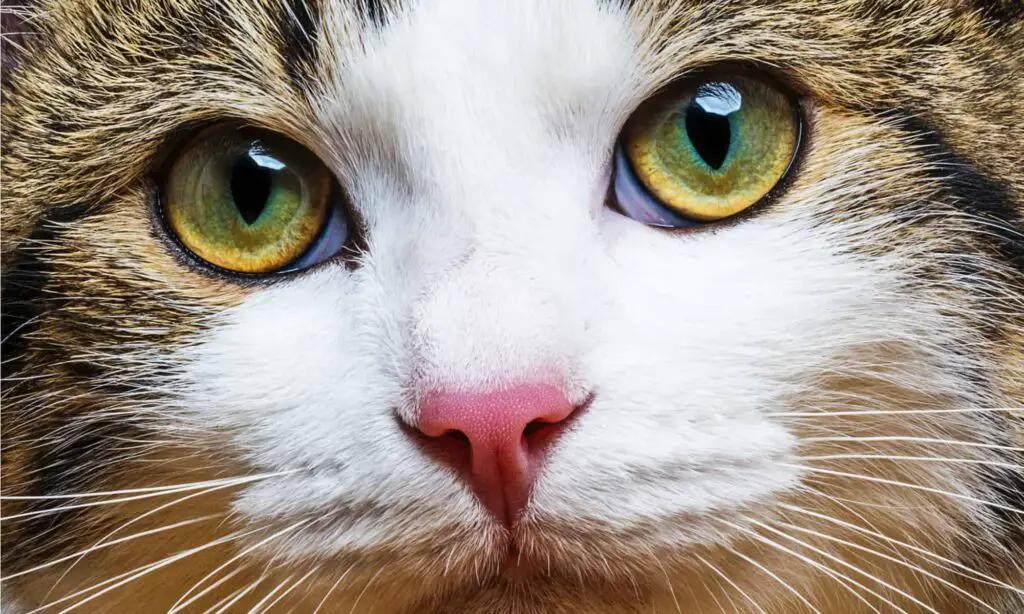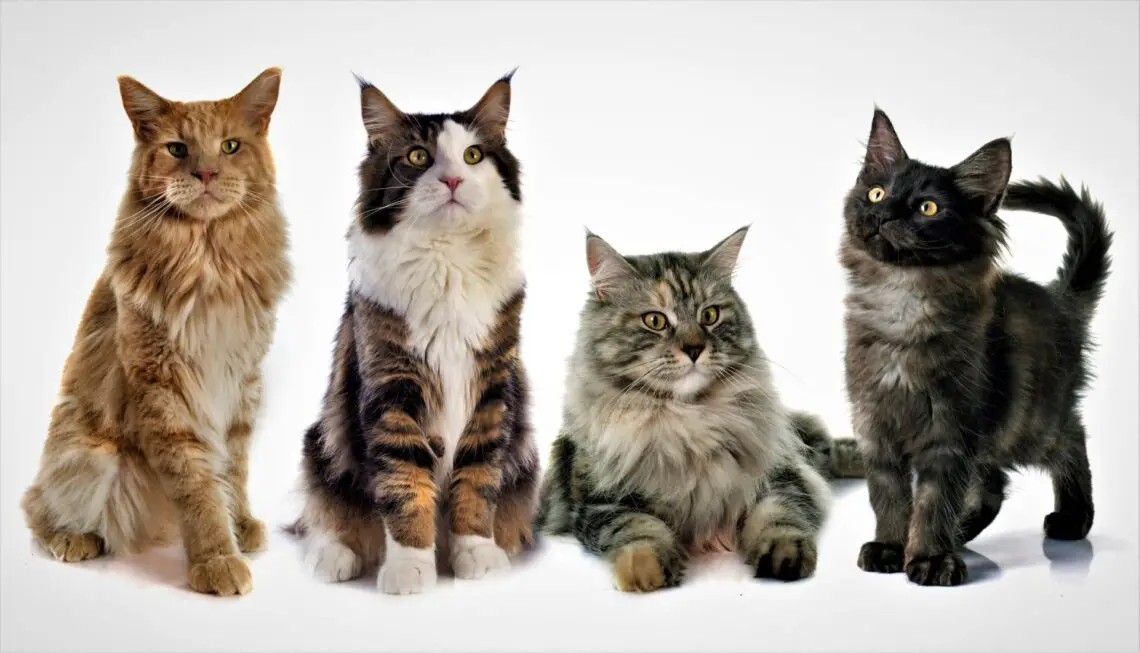Introduction
Can Cats See in Color?
For centuries, humans have been fascinated by the mysterious and enigmatic nature of cats. From their graceful movements to their piercing eyes, these creatures have captivated our attention and sparked countless debates and discussions. One of the most intriguing questions that has puzzled cat lovers and scientists alike is whether cats can see in color. While humans perceive the world through a spectrum of colors, it has long been believed that cats see the world in shades of gray. However, recent research suggests that cats may indeed have some ability to see colors, albeit in a limited capacity.
Contrary to popular belief, cats are not completely colorblind. While it is true that cats do not see colors in the same way that humans do, they are not entirely devoid of color vision. The reason for this lies in the structure of their eyes. Like humans, cats have cells called cones in their retinas that are responsible for color vision. However, cats have fewer cones than humans, which means that their color perception is not as vibrant or detailed as ours. Instead of seeing the full spectrum of colors, cats are believed to see a more muted version of the world, with a focus on shades of blue and green.
So, why do cats have limited color vision? The answer lies in their evolutionary history. Cats are natural predators, and their visual system has evolved to suit their hunting needs. While humans rely on color vision to distinguish between ripe and unripe fruits or to spot potential dangers, cats rely more on their acute night vision and ability to detect motion. For them, the ability to see in low light conditions and detect subtle movements is far more important than discerning between different colors. This is why cats have developed a visual system that prioritizes these aspects over color perception.

What color do cats see best?
The answer is: cats can recognize shades in the grey, blue, and green color palette. Especially cats are masters in the grey undertones. It is evolutionarily reasoned grey is the main color of their favorite meal- rodents. Cats see the best grey, green and blue colors
Cats have long been known for their keen sense of sight, especially when it comes to hunting prey. But have you ever wondered what colors they see best? While humans have three types of color receptors in their eyes, cats only have two. This means that their color vision is not as vibrant as ours, but they can still see a range of colors.
The two types of color receptors in a cat’s eyes are called rods and cones. Rods are responsible for detecting light and motion, while cones are responsible for detecting color. Cats have more rods than cones, which means they are better at seeing in low light conditions. This is why cats are known for their ability to see in the dark.
When it comes to color vision, cats are most sensitive to shades of blue and green. This is because their cones are most responsive to these colors. They have a harder time distinguishing between red and green, as their cones are not as sensitive to these colors. However, cats can still see these colors, just not as vividly as humans can.
It’s important to note that cats see the world differently than we do. While we see a full spectrum of colors, cats see a more muted version. They also have a wider field of view, which allows them to see more of their surroundings at once. This is why cats are often able to spot prey or potential threats before we do.
cats see best in shades of blue and green, and have a harder time distinguishing between red and green. Their color vision is not as vibrant as ours, but they make up for it with their ability to see in low light conditions and their wider field of view. So the next time you see a cat, remember that they see the world in a different way than we do.
How does cat vision look like?
Because cats have a mere fifth the cone cells humans do, they mostly see in black and white. They can also see blue and yellow, but they don’t see saturated colors. As we said before, they depend on movement and contrast to identify objects.
Cats have a unique vision that differs from humans and other animals. Their eyes are specially adapted to help them navigate and hunt in various light conditions. Understanding how cat vision works can give us insight into their behavior and abilities.
Cat eyes are designed for excellent night vision. They have a structure called the tapetum lucidum, which reflects light back through the retina, giving it a second chance to be detected. This allows cats to see in low light conditions that would be almost pitch black to humans. It also explains why their eyes seem to glow in the dark.
Another interesting aspect of cat vision is their ability to see movement. Cats have a higher number of rod cells in their retinas compared to humans, which are responsible for detecting motion. This gives them an advantage when hunting prey, as they can easily spot even the slightest movement.
However, cats have a trade-off when it comes to color vision. Unlike humans, who have three types of color receptors (cones) in their eyes, cats only have two. This means that they have a limited ability to distinguish between certain colors, particularly those in the red and green spectrum. Cats primarily see the world in shades of blue and yellow.
Depth perception is another interesting aspect of cat vision. Cats have a wider field of view compared to humans, which allows them to see more of their surroundings. However, their depth perception is not as accurate as ours. This is because their eyes are positioned more to the sides of their heads, giving them a wider range of vision but sacrificing some depth perception.
Do cats see us in colour?
Color vision
A cat’s vision is similar to a human who is color blind. They can see shades of blue and green, but reds and pinks can be confusing. These may appear more green, while purple can look like another shade of blue. Cats also don’t see the same richness of hues and saturation of colors that we can.
There is a common belief that cats see the world in black and white. However, this is not entirely true. While it is true that cats do not see colors in the same way humans do, they are not completely colorblind either. In fact, cats have a more limited color vision compared to humans.
Unlike humans who have three types of color receptors in their eyes, cats only have two. This means that they are not able to see the full range of colors that humans can. Cats primarily see the world in shades of blue and green, with some ability to distinguish between red and yellow. This limited color vision is due to the fact that cats have fewer cones, which are the cells responsible for detecting color, in their eyes compared to humans.
However, despite their limited color vision, cats have other visual abilities that compensate for this. For example, cats have a much wider field of view compared to humans, allowing them to see more of their surroundings at once. They also have excellent night vision, thanks to a layer of cells called the tapetum lucidum that reflects light back through the retina, enhancing their ability to see in low light conditions.
It is also worth noting that cats rely more on their other senses, such as their sense of smell and hearing, to navigate and interact with their environment. While color vision is important for humans, cats have evolved to rely more on other visual cues and sensory information to survive and thrive.
Can cats see black or white?
A common misconception is that cats can only see in black and white. Luckily, cats do not only see black and white and can see color, although what they see differs from what humans see. Cats have many more rod cells than cone cells in their retinas. Rod cells are excellent for picking up activity in dim light.
When it comes to the visual abilities of cats, there are often many questions that arise. One common question is whether cats can see black or white. To answer this question, it is important to understand how a cat’s vision works and how it differs from human vision.
Cats have a unique visual system that allows them to see in low light conditions and detect movement with great precision. They have a higher number of rod cells in their eyes, which are responsible for detecting light and motion. This means that cats have excellent night vision and can see in almost total darkness. However, their ability to see colors is not as developed as that of humans.
While cats can see some colors, their color vision is not as vibrant as ours. Cats are considered to be dichromatic, which means they have two types of color receptors in their eyes. These receptors are sensitive to blue and green light, but they are not as sensitive to red light. As a result, cats have difficulty distinguishing between certain colors, such as red and green.
So, can cats see black or white? The answer is yes, cats can see both black and white. However, their perception of these colors may be different from ours. Cats see black as a shade of gray, and they can distinguish between different shades of gray. Similarly, cats see white as a shade of gray as well. This is because their visual system is more sensitive to light and motion rather than color.
How long do cats remember you?
They can remember a person’s face for up to 10 years! And kitties become seriously attached to their humans, so in case you were wondering, yes, your cat remembers and misses you when you’re gone for a few weeks, and they absolutely mourn when a trusted companion drops out of their life.
Cats have a reputation for being independent and aloof creatures, but anyone who has ever owned a cat knows that they can form strong bonds with their human companions. One question that often arises is how long cats can remember their owners. Do they have a long-lasting memory of their human friends, or do they quickly forget about them?
Research suggests that cats have a surprisingly good memory when it comes to remembering their owners. In fact, studies have shown that cats can remember people and events for several years. This means that if you have a strong bond with your cat, they are likely to remember you even if you are separated for a long period of time.
One reason why cats have such good memories is their ability to form strong emotional attachments. When a cat forms a bond with their owner, they become emotionally attached to them. This emotional connection helps to strengthen their memory of the person. Cats are also known for their excellent spatial memory, which allows them to remember the layout of their environment and the location of important resources, such as food and water. This spatial memory likely plays a role in their ability to remember their owners.
Another factor that influences how long cats remember their owners is the quality of the relationship. Cats are more likely to remember someone who has treated them well and provided them with positive experiences. If a cat has had a negative experience with a person, they may be more likely to forget about them or associate them with negative emotions.
It’s important to note that every cat is different, and their ability to remember their owners can vary. Some cats may have a stronger memory than others, just as some humans have better memories than others. Additionally, factors such as age and health can also affect a cat’s memory. Overall, however, cats have the ability to form long-lasting memories of their owners and can remember them for several years.
What is the visual perception of cats in terms of color?
Cats have a unique visual perception when it comes to color. While humans have trichromatic vision, meaning they can perceive a wide range of colors using three types of color receptors in their eyes, cats have dichromatic vision. This means that cats have only two types of color receptors, making their color perception more limited compared to humans.
Due to their dichromatic vision, cats primarily see the world in shades of blue and green. They have difficulty distinguishing between red and green colors, as well as different shades and hues within those colors. This is because the color receptors in their eyes are less sensitive to red light. However, cats have a heightened sensitivity to motion and can see better in low light conditions compared to humans.
Do cats have the ability to see different colors?
Yes, cats have the ability to see different colors, but their color vision is not as vibrant as that of humans. While humans have three types of color receptors in their eyes, cats only have two. This means that cats are dichromatic, whereas humans are trichromatic. The two types of color receptors in cats are sensitive to blue and green colors, but they are not able to perceive red colors as vividly as humans can.
Due to their dichromatic vision, cats see the world in a more muted color palette. They have difficulty distinguishing between certain shades and hues, especially those in the red and orange range. However, cats have excellent night vision and are more sensitive to motion, which compensates for their limited color perception.
Can cats distinguish between different shades and hues?
Yes, cats have the ability to distinguish between different shades and hues to some extent. While they may not see colors as vividly as humans do, they can still perceive a range of colors. Cats have a specialized type of color vision called dichromatic vision, which means they have two types of color receptors in their eyes. These receptors are sensitive to blue and green wavelengths of light, but they lack the receptors for red and orange wavelengths. As a result, cats see the world in a more limited color palette compared to humans.
Despite this limitation, cats are still able to distinguish between different shades and hues within their color range. They can perceive variations in brightness and contrast, which allows them to differentiate between objects of similar colors. For example, a cat may be able to distinguish between a light blue toy and a dark blue toy, even though they cannot see the full range of colors that humans can.
It is important to note that while cats may not see colors in the same way humans do, their visual perception is highly adapted for their natural hunting instincts. Cats have excellent night vision and are able to see in low light conditions, which is crucial for their survival. Their ability to distinguish between different shades and hues within their limited color range helps them navigate their environment and detect prey. So, while cats may not see the world in the same vibrant colors as humans, they still have a unique and specialized visual perception that suits their needs as predators.
How does the color vision of cats compare to that of humans?
Cats have a different visual perception of color compared to humans. While humans have trichromatic vision, meaning they have three types of color receptors (cones) in their eyes that allow them to see a wide range of colors, cats have dichromatic vision. This means that cats only have two types of cones, which limits their ability to perceive certain colors.
Specifically, cats have cones that are most sensitive to blue and green wavelengths of light, but they have a reduced sensitivity to red wavelengths. As a result, cats see the world in a more muted color palette compared to humans. They have difficulty distinguishing between shades of red and green, and they may perceive these colors as similar or even as shades of gray.
However, cats compensate for their limited color vision with their excellent night vision and ability to see in low light conditions. They have a higher number of rod cells in their eyes, which are responsible for detecting light and motion. This allows cats to navigate and hunt effectively in dimly lit environments, even though their color perception may be less vibrant compared to humans.
Are there any limitations or differences in the color perception of cats compared to other animals?
Yes, there are limitations and differences in the color perception of cats compared to other animals. Cats have what is known as dichromatic vision, meaning they have two types of color receptors in their eyes, while humans have three. This means that cats are not able to see the full range of colors that humans can. Specifically, cats have difficulty distinguishing between colors in the red and green spectrum. They see these colors as more muted and less vibrant compared to humans.
Additionally, cats have a higher sensitivity to motion and are more attuned to detecting movement rather than colors. This is because their visual system is designed to excel in hunting and tracking prey. Cats have a wider field of view and better peripheral vision than humans, allowing them to detect movement from a greater distance.
Overall, while cats may not have the same color perception as humans, they have adapted their vision to suit their needs as predators. Their ability to see in low light conditions and detect subtle movements makes them highly efficient hunters. So, while cats may not see the world in the same vibrant colors as humans, they have other visual abilities that make them well-suited for their natural behaviors.

Conclusion
Cats have the ability to see in color, although their perception of color is different from that of humans. While humans have three types of color receptors in their eyes, cats only have two. This means that cats have a more limited color spectrum and may not be able to distinguish between certain colors that humans can easily differentiate. However, this does not mean that cats see the world in black and white. They can still perceive a range of colors, albeit in a more muted and less vibrant way.
Research has shown that cats are most sensitive to colors in the blue and green spectrum. This is because their two types of color receptors are most responsive to these wavelengths of light. As a result, cats are better able to see shades of blue and green, while colors in the red and orange range may appear more dull or gray to them. This is why many cat toys and accessories are designed in shades of blue and green, as these colors are more visually stimulating for cats.
It is also important to note that a cat’s vision is not solely determined by their ability to perceive color. Cats have other visual adaptations that allow them to excel in low light conditions. They have a larger number of rod cells in their eyes, which are responsible for detecting light and motion. This gives them excellent night vision and the ability to see in dimly lit environments. So while their color vision may be different from ours, cats have other visual advantages that make them well-suited for their natural hunting instincts.
Cats do have the ability to see in color, although their perception of color is different from humans. Their color vision is more limited, with a preference for shades of blue and green. However, their visual adaptations, such as excellent night vision, compensate for this and make them highly skilled hunters. Understanding a cat’s visual abilities can help us better understand their behavior and provide them with appropriate toys and stimuli that cater to their unique vision.
Discover whether cats can see in color and learn about their unique vision capabilities. Find out how cats perceive the world around them and if they can distinguish different colors.





No Comments